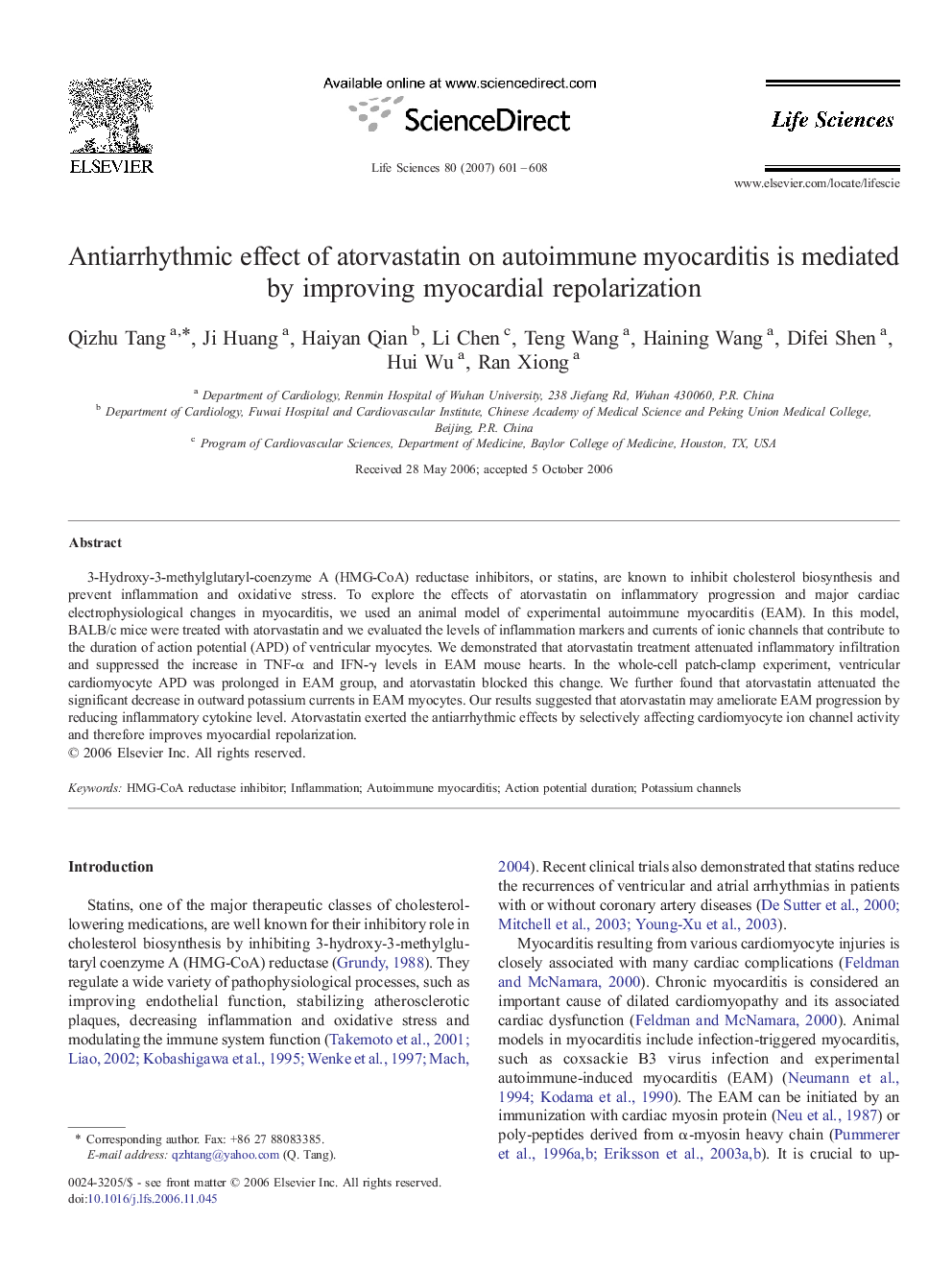| Article ID | Journal | Published Year | Pages | File Type |
|---|---|---|---|---|
| 2553528 | Life Sciences | 2007 | 8 Pages |
Abstract
3-Hydroxy-3-methylglutaryl-coenzyme A (HMG-CoA) reductase inhibitors, or statins, are known to inhibit cholesterol biosynthesis and prevent inflammation and oxidative stress. To explore the effects of atorvastatin on inflammatory progression and major cardiac electrophysiological changes in myocarditis, we used an animal model of experimental autoimmune myocarditis (EAM). In this model, BALB/c mice were treated with atorvastatin and we evaluated the levels of inflammation markers and currents of ionic channels that contribute to the duration of action potential (APD) of ventricular myocytes. We demonstrated that atorvastatin treatment attenuated inflammatory infiltration and suppressed the increase in TNF-α and IFN-γ levels in EAM mouse hearts. In the whole-cell patch-clamp experiment, ventricular cardiomyocyte APD was prolonged in EAM group, and atorvastatin blocked this change. We further found that atorvastatin attenuated the significant decrease in outward potassium currents in EAM myocytes. Our results suggested that atorvastatin may ameliorate EAM progression by reducing inflammatory cytokine level. Atorvastatin exerted the antiarrhythmic effects by selectively affecting cardiomyocyte ion channel activity and therefore improves myocardial repolarization.
Keywords
Related Topics
Health Sciences
Medicine and Dentistry
Cardiology and Cardiovascular Medicine
Authors
Qizhu Tang, Ji Huang, Haiyan Qian, Li Chen, Teng Wang, Haining Wang, Difei Shen, Hui Wu, Ran Xiong,
